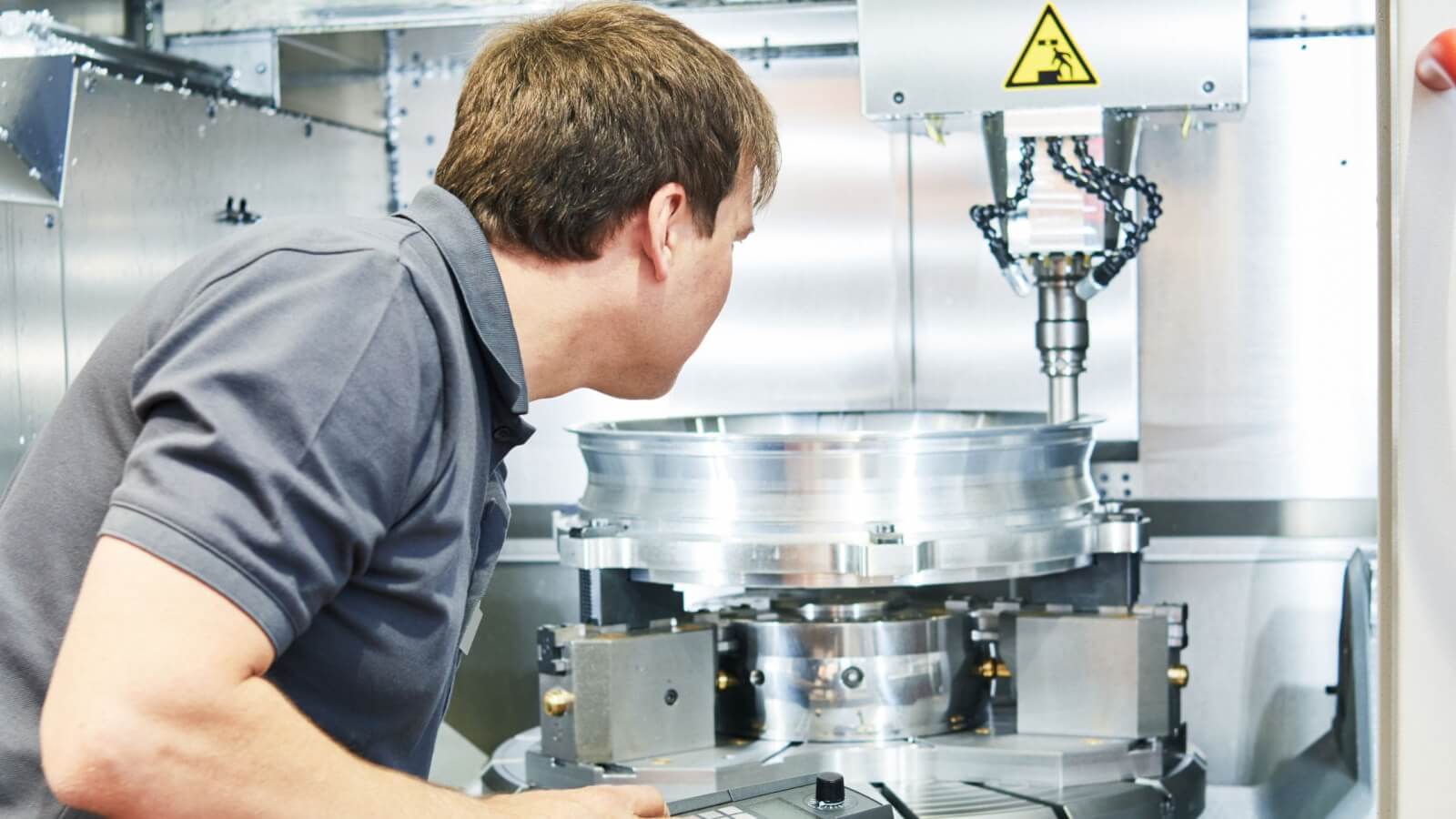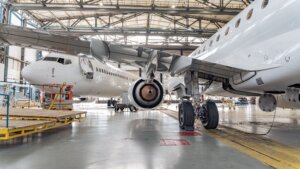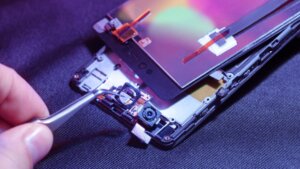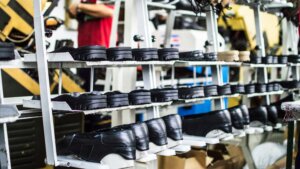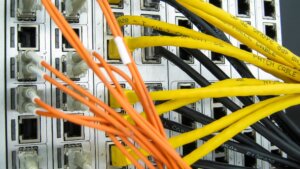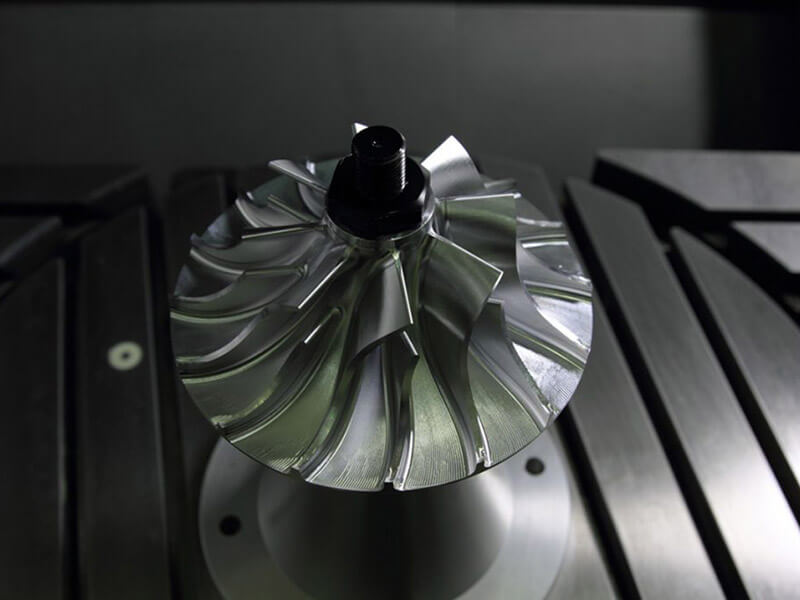CNC machining is nothing short of a miracle for manufacturers, providing high-speed manufacturing with complete automation and ultra-high precision. The countless benefits of the CNC machining process have made it applicable in many manufacturing industries.
This article will answer the question: what are the different applications of CNC machining technology in various industries?
What is CNC Machining?
CNC stands for Computer Numerical Control. The CNC machining process is a manufacturing process that creates the final part by removing material using a cutting tool. There are many different types of CNC machines with numerous cutting tool options for a range of jobs and applications.
What are the different industries that use CNC machining processes?
For a good understanding of the various uses of CNC machining, we will go through the various industries that use this technology and the different types of production processes within each.
Aerospace Industry
The aerospace industry and CNC machining have developed hand in hand. In fact, the aerospace industry’s requirements have played a key role in developing CNC machining processes. The aerospace industry constantly develops sturdy materials for constructing equipment and other gadgets.
Most of this equipment focuses on factors like safety and quality control. Therefore, precision machining is a definite requirement. CNC machining fills out the checklist very well. Some of the aerospace parts produced using CNC technology include:
- Airfoils
- Antennae
- Landing gear
- Manifolds
- Bushings
- Radiofrequency Suppression Materials
- Electrical Connectors
Automotive Industry
The automotive industry is one of the main sectors for CNC machining. CNC machining offers advantages at every stage of the automotive manufacturing process, from prototyping in Research and Development (R&D) to producing large quantities of parts.
In addition, CNC milling machines and lathes make a lot of different components, from large engine block parts to small gears and panels. These machines work on plastics as well as metals in automotive industries.
A combustion engine alone uses multiple CNC machining processes. These include turning large metal blocks (usually aluminum) into engine body panels, crafting cylinders and pistons, and other parts that create the cylinder assembly in the engine block.
Here are some of the automotive components made using CNC machining:
- Gearboxes
- Axles
- Engine parts
- Valves
- Cylinder Blocks
- Dashboard panels
- Gas gauges
Marine Industry
The marine industry relies on high-quality craftsmanship since it creates water transportation that might travel all over the globe. The large-scale manufacturing process for boats and other water transportation requires automation to fulfill the manufacturing deadlines and quality control. This is only possible with CNC machining.
CNC mills, lathes, electrical discharge machining, and other processes create almost all the boat parts for construction. These range from the hull, considered a boat’s skeleton, to interior trimmings. Here are some of the components that CNC programs manufacture for the marine industry:
- Deck structures
- Hull structures
- Trimmings and Joints
- Ribs
- Stringers
- Interior furnishings like:
- Kitchen Countertops
- Storage Cabinets
- Wraparound seating
Electronics Industry
As in the case of the automotive industry, the electronics industry uses CNC machining in prototyping and the production stage. An advantage CNC machining offers in electronics is the ability to handle small-scale construction with consistency.
A prime example of CNC machining in electronics is the metal alloy casing of Apple products like the Macbook and the iPhone. These are made using a CNC milling machine and CNC routers. CNC applies not only to the external case but also to the internal components of consumer electronics products.
- Electronic components
- PCBs
- Housings
- Jigs
- Semiconductor manufacturing process
- Wafer plates
- Gas distribution channels
- Solder flex stencils
- Wafer carriers
- Heat sinks
Smartphones
While smartphones are also electronics, they depend on CNC machines so much that they require a special mention of their own. The majority of smartphone construction is done with CNC manufacturing techniques.
For example, the touch-sensitive screen of a smartphone is made by a CNC machining process done using glass milling machines. The screens used in applications like smartphones require a specific surface finish. Only CNC machines can achieve this in the large quantities needed.
Here are the smartphone parts made with CNC programming running CNC routers and CNC milling machines:
- Smartphone bodies (both metal and plastic)
- Smartphone cases
- Touch-sensitive screens
- Rear glass panels
- Aesthetic etching
- Supported accessories
- Internal housing and fixtures
Military and Defense Industry
The requirements of the military and defence industries are similar to those of the aerospace industries. Instead of simple parts, these industries require complex machinery for the wide range of innovative materials and sophisticated equipment they manufacture.
The applications of CNC systems in these sectors are vast, from intricate customized designs for weapon bodies to a missile’s internal components. Here are a few of the parts that are made using a CNC manufacturing process:
- Main rotor hubs
- Couplers
- Seat frames for land and air transportation
- Clamshells
- Flanges
- Transmission parts
- Missile components
- Helicopter components
- Retainer rings
- Ammunition hoisting components
Healthcare Industry
It may seem surprising to know that CNC systems are used in the healthcare sector. However, the applications of CNC machining in healthcare are extensive. CNC machining in the healthcare and medical industry is used for manufacturing medical supplies and rapid tooling to create dies for injection molding. Then, the injection molding process produces equipment like face masks.
Precision smooth surface finishes are other critical requirements for healthcare industry tools. Many of these, such as bone screws and plates, are inserted into a patient’s body and remain there. Therefore, it is vital to ensure that the patients do not face discomfort.
While some plastic components can be crafted with injection molding, metal parts, and any complex parts exclusively use CNC machining. Some of the parts that healthcare manufacturers craft with CNC machines are:
- Bone screws
- Bone plate
- Surgical instruments
- Cutters
- Holders
- Forceps
- Clamps
- Blades
- Pacemakers
- Prosthetics
Energy Industry
The energy sector is vast, with subsectors such as the oil and gas industry. As a matter of fact, the energy industry is still in the growth stage with the rise of green energy and renewable energy resources. CNC is the supporting pillar for making tools and equipment across the energy sector.
For instance, in the case of wind turbines, precision CNC machining is needed to make the blades balanced enough to rotate with the wind. These blades, the bearings, and other components, are crafted with CNC face milling machines. For non-renewable energy resources like oil and gas, CNC machines make parts for pipelines and refineries.
Here are some common applications of CNC machining for the energy industries:
- Valves
- Pistons
- Cylinders
- Rods
- Pins
- Turbine blades
- Bearings
- Hydro generators
- Generator housings
- Bushings
- Solar panel frames
Dental Equipment
While a subsector of the healthcare and medical industry, the vast range of custom parts used by the dental industry has made it a major consumer of CNC machined products. It uses many different CNC machining techniques to manufacture a variety of parts.
Dental equipment such as prostheses demands machining to very tight tolerances to fit the required space to exact specifications. Some common CNC machines used by the dental sector are end mills and CNC drilling machines. Here is the dental equipment that CNC machining makes:
- Dental prostheses
- Dental cap
- Bridgework
- Orthodontic trays
- Crown
- Telescope crown
- Implants
- Implant abutment
- Framework
- Implants guide
- Screwed-in bar
- Dentures
- Inlay core
Niche Manufacturing
Niche manufacturing industries are not huge like the ones mentioned so far. However, they are small to medium-scale manufacturing facilities dependent on CNC machining for reliable parts.
Jewelry
CNC machining is the go-to method for making jewellery and etching and engraving. Jewelry-making uses CNC milling machines, CNC lathes, CNC routers, and CNC laser engraving machines. A jewellery CNC machine not only helps manufacture and form metal jewelry but also in grinding and polishing items.
Some of the items made by CNC systems in the jewellery sectorare:
- Rings
- Molds
- Casting models
- Engravings
- Marble faceting
- Jewelry polishing
Shoes
CNC machining is not used directly to craft shoes. However, it creates metal molds used as dies to create the design seen on rubber soles. Engraving the brand name and logo can also be done with the help of a CNC machine.
Furniture
Furniture making uses CNC machines for many materials such as wood, glass, metal, plastic, and even upholstery. The range of CNC machines used for furniture making is vast, depending on the job required. For example, wooden legs for a dining table can be designed with a simple CNC lathe, and metal cutting can be done with electrical discharge machining. Here are some of the furniture applications of a CNC machine:
- Carvings
- Moldings
- Dining table legs
- Chair legs
- Metal frames
- Glass cutting
- Polishing
- Engraving
Musical Instruments
Musical instruments require next-level craftsmanship and precision. This is because a slight deviation from the intended design can lead to significant changes in the musical harmony of the finished product, effectively making it defective. For this purpose, CNC machines turn out to be the ideal choice. Here are a few of the things in musical instruments that require CNC machines:
- Custom parts for old instrument restoration
- Guitar necks
- Violin necks
- Wooden instrument bodies
- Fretboards
- Pianos
- Engravings
- Carving
- Turning knobs
- Fret slots
- Experimenting with new materials
Semiconductors
While the use of CNC for semiconductors has been mentioned above in applications of electronics and smartphones, the actual use of CNC systems in the industry is far wider. Since semiconductors form the basis of modern industry, knowing the applications of CNC machining in this sector might be useful. Here are some of the products:
- High precision molds
- Casings
- Enclosures
- Wafer conductor processing units
- Printed Circuit Boards (PCBs)
- Heat sinks
- Connectors
- Sockets
Tooling
CNC has completely changed the way tooling has developed. CNC technology has paved the way for custom-made dies and molds that can create any type and shape of products. Additionally, it has provided the opportunity to make tools for prototyping, leading to rapid prototyping and rapid tooling. Rapid prototyping provides the ability to create prototypes with a quick turnaround time.
Signage
The signage sector has evolved considerably regarding the available designs and usable materials. Some of the common materials that are popular in this industry are wood, plastic, aluminum, sheet metal, brass, acrylics, foam, engineering materials, and more. These materials are molded into a new shape for every job based on the design.
Pre-programmed computer software running a CNC machine makes this possible through the ability to turn any design into a finished product. Designers create CAD models for every signage project and turn them into a CAM CNC program, which then runs the machine. This enables CNC machines to recreate any lettering styles, sizes, and fonts for signage projects.
Hybrid Manufacturing
A company that designs custom parts for the automotive industry might use a hybrid manufacturing process to create complex geometries and intricate parts. The process begins with 3D printing, where a polymer material is used as a base layer. Then, CNC machining refines and shapes the final part. This combination of processes allows for greater design flexibility than either process could achieve on its own. The process also eliminates the need for manual assembly and increases the production speed compared to traditional methods. Once the design is complete, the part can be tested and evaluated for use in automotive applications. The hybrid manufacturing process allows companies to reduce costs while creating quality parts quickly and efficiently.
Construction and Architecture
Before constructing a skyscraper or building complex, a scaled-down model of the complex is produced. CNC machining helps in accomplishing this task. CNC machining also creates decor elements for architects and interior designers. The design elements and their features can be highly customized based on the tasks at hand.
Optical Communication
The optical communication industry is the sector that makes instruments to comprehend and manipulate light waves for various purposes. The materials for this industry are primarily glass-based, and quality control is required on a microscopic level. Due to the requirement for high precision, only CNC machining provides the necessary features for any optical communication project. Some of the applications of CNC machining in the optical sector are:
- All types of lenses
- Microscopes
- Laser components
- Telescopes
- Custom optical parts
Robotics and Automation
The robotics and automation sector has come a long way but is still in its early stages due to the endless possibilities in the area. CNC machining provides the methods to meet these possibilities by creating parts that serve the purpose needed. Some of these parts are:
- Robotic arms
- End effectors
- Sensors
- Fixtures
- Jigs
- Controllers
Research and Development
All manufacturing industries have a research and development sector that tests new technology, parts, and products. CNC machining is the primary method used in this sector for prototyping, which creates a fast model of the actual part required. CNC machining is also used to make dies and molds for the prototyping stage production of parts.
Agriculture
Agriculture is a huge industry that makes everything from small shovels to large-scale tractors and combine harvesters. The CNC milling process is used for every agricultural tool in some way, regardless of scale. There are many different CNC machines used for cutting and drilling purposes.
Some of the common applications of CNC machining in agricultural manufacturing are:
- Tractor components
- Irrigation system parts
- Harvesters
- Tanks
- Headers
- Bailers
- Hoppers
- Manual tools
Food and Beverage
The food and beverage industries aren’t the first thought that comes to mind when thinking of CNC machining. However, these industries rely heavily on CNC in many different areas. While machines like CNC waterjet cutters work directly on food items for cutting, others are used for packing or creating cooking equipment. Some common applications are:
- Molds
- Die casting
- Food processing machine tools
- Bakeware
- Etching
Metal Fabrication
The metal fabrication industry supplies many secondary industries. It relies on CNC processes like wire EDM cutting, laser cutting, waterjet and plasma cutting to cut large metal sheets. Other CNC programs can forge these metal sheets into any shape needed.

Conclusion
As is evident after reading the information provided above, the uses of CNC machines are vast. This technology is used directly or indirectly in almost every industry imaginable. In any given sector, the amount of equipment that uses CNC systems or CNC-made parts is so vast that it is impossible to list them all in this article.
An important thing to note is that for any application, CNC technology provides its benefits only if quality CNC services are used. 3ERP is a leading CNC machining services provider, able to meet any manufacturing requirements and custom orders as required.
